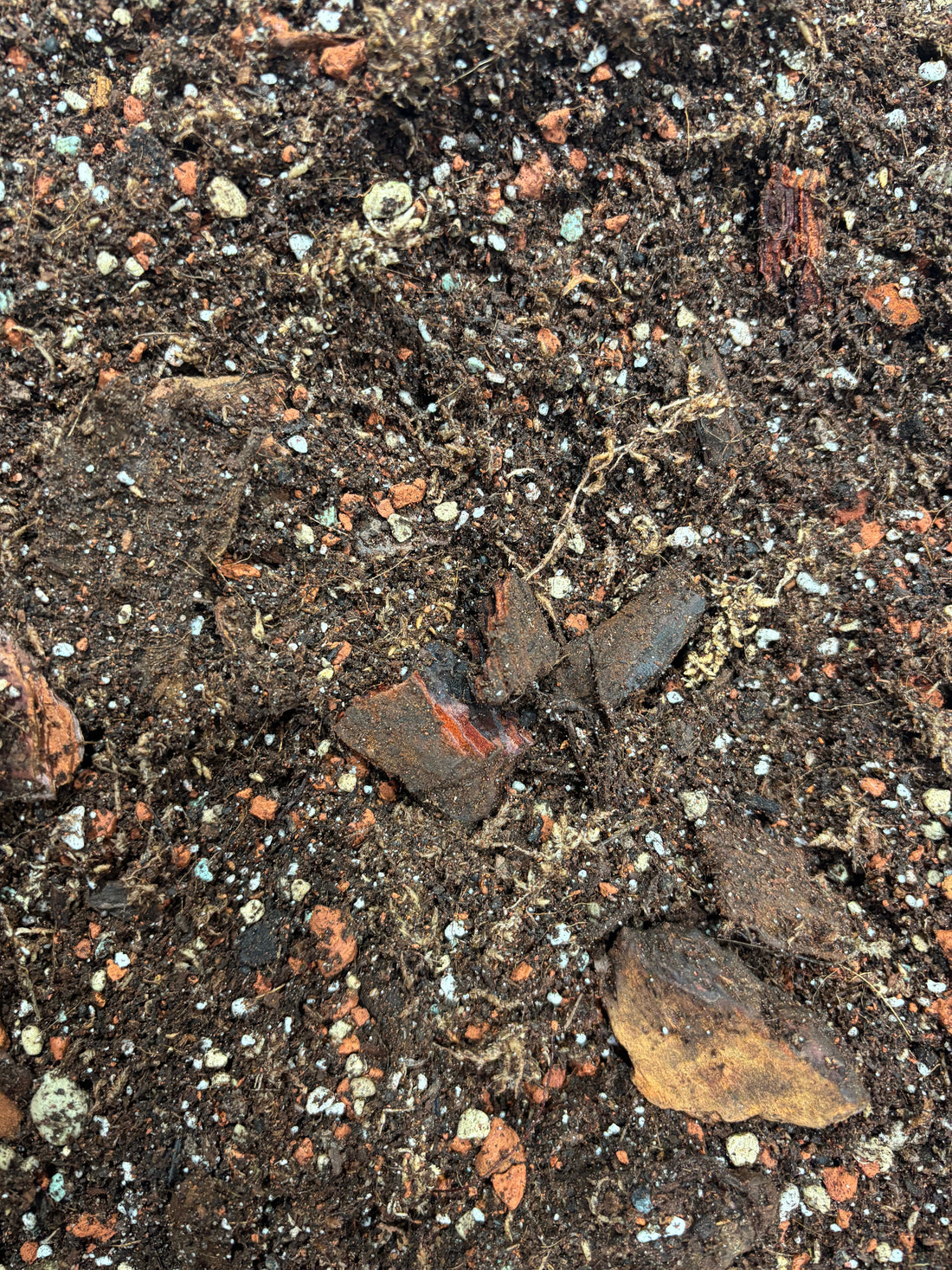
The Secret Sauce for Happy Aroids: Let’s Talk Soil Mix
Aktie
The Secret Sauce for Happy Aroids: Let’s Talk Soil Mix
If you’ve fallen in love with monsteras, philodendrons, anthuriums, or alocasias, congrats—you’re officially an aroid person. These tropical beauties have become indoor plant royalty for good reason: dramatic leaves, interesting growth habits, and a certain flair for jungle vibes. But to really help them thrive, there’s one key ingredient people often overlook: the right soil mix.
Let’s dig into what makes the perfect aroid mix—and why your plant's roots will thank you for it.
Why Aroid-Specific Soil Matters
Aroids are mostly epiphytic or hemiepiphytic in the wild—meaning they grow on trees, rocks, or up through the forest floor, not in heavy, compacted soil. That means they need something light, chunky, and fast-draining, but still capable of holding onto just enough moisture and nutrients.
Using a standard potting mix straight out of the bag? That’s like making your Monstera wear wet socks. Constantly. Root rot, compacted soil, and sad leaves are often the result.
The Ideal Aroid Soil Mix Recipe
Here’s a basic, tried-and-true recipe to get you started:
● 40% chunky orchid bark
● 25% high-quality potting soil or coco coir
● 15% perlite or pumice
● 10% horticultural charcoal
● 10% worm castings (optional but awesome)
Feel free to tweak this based on your environment (humidity, watering habits, pot size, etc.). Think of it like baking—there's a base recipe, but room to experiment.
Don’t feel like mixing it yourself? We’ve got you covered. Our premium, hand-blended Aroid Mix is available in our web store—perfectly balanced and ready to go, with all the good stuff your plants need (and none of the fluff). Just open, pot, and watch your aroids thrive.
What Each Ingredient Does (and Why It Matters)
🌲 Orchid Bark
Gives your mix structure and chunkiness. Mimics the bark and debris aroids would grow in naturally. Encourages airflow and keeps the soil from compacting.
🌱 Potting Soil or Coco Coir
This is your moisture-retaining base. Potting soil is nutrient-rich, but coco coir is more sustainable and resistant to pests. Both work—just avoid cheap, heavy mixes with moisture-retaining crystals.
🪨 Perlite or Pumice
These light, airy particles help with drainage. Perlite is more common, but can float. Pumice is heavier and adds some grit, which can be nice if your mix tends to shift around or float.
🧪 Horticultural Charcoal
Acts like a natural filter—absorbing toxins, improving drainage, and keeping things fresh. A bit underrated, but highly effective.
🐛 Worm Castings (Optional)
Organic, slow-release fertilizer that’s super gentle and packed with micronutrients. Bonus: it helps boost microbial activity in the soil.
Mixing Tips
● Mix everything in a large container or tarp using gloved hands or a trowel.
● Moisten the mix lightly before potting—this helps the components settle and makes it easier to work with.
● Store leftovers in a breathable container (like a plastic bin with holes or mesh bags) to prevent mold.
A Few Nerdy Pro Tips
● Live in a dry climate? Slightly increase the coir or worm castings for better moisture retention.
● Constantly overwatering? Add more bark and perlite to speed up drainage.
● Want to go extra pro? Add some mycorrhizal fungi powder when repotting—it helps with nutrient absorption and root health.
Final Thoughts
Think of soil as your plant’s home—it should be cozy, breathable, and tailored to their lifestyle. Aroids aren’t fans of soggy basements or stiff mattresses. With the right mix, you’re not just preventing problems—you’re setting your plant up to absolutely thrive.
Got a favorite soil mix hack or ingredient we didn’t mention? Drop it in the comments—we’re always down to nerd out with fellow plant lovers.
